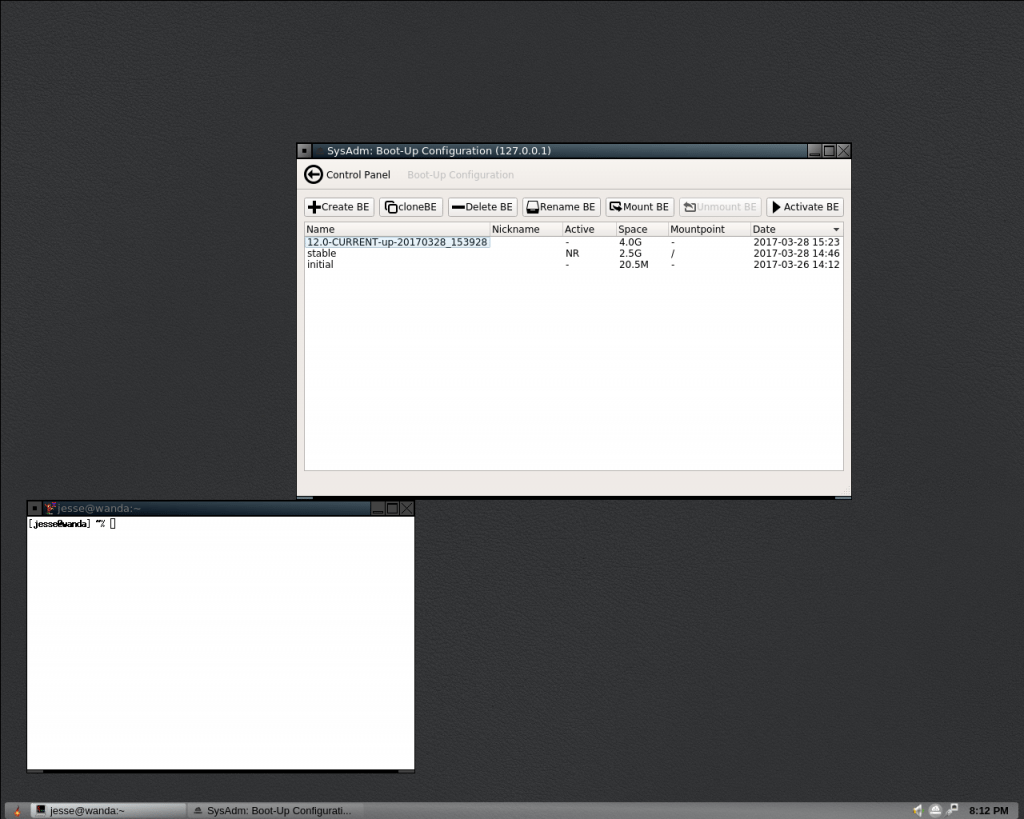Dec 312017
| Simple bare-bones terminal package for OS/2 PM. | |||
|---|---|---|---|
| File Name | File Size | Zip Size | Zip Type |
| PMTERM.DOC | 2593 | 1222 | deflated |
| PMTERM.EXE | 12528 | 6173 | deflated |
Download File PMTERM.ZIP Here
Contents of the PMTERM.DOC file
PMTERM.EXE
-= Ansi Terminal Program For Presentation Manager =-
-----------------------------------------------------------------------------
PMTERM.EXE is a terminal emulator. It performs no low level activity
at all. It accomplishes everything with calls to the PM API, its AVIO
subsystem, and generic C functions. It doesn't need a special DLL. It takes
up only 10K of memory, and 12k of disk. Essentially, it sits as an
intermediary between two "files" maintained by OS/2: the com port and the
display. Its job is to see to it that they can read and write to each other.
Likewise, PMTERM.EXE supplies no fancy user interface. It has one, but that
belongs to the Presentation Manager, and it is PM windows that the user inter-
acts with. It co-exists with any other programs in memory and is easily man-
aged by the OS.
PMTERM.EXE uses the AVIO subsystem because it seems to be made for
comm programs which are by definition teletype technology. The philosophy
behind the GPI is 180 from teletype: the Gpi was born to look good; tele-
type is happy just to get to its destination and look legible.
Comm programs are unusual in that they use the Ansi system control
sequences much more than most software, and any comm program must be pre-
pared to deal with them. The Gpi knows nothing about Ansi, but AVIO handles
it nicely, if not perfectly. I notice that BBS's that use the ANSI and the
extended IBM ASCII characters for graphics effects are not perfectly handled
by the AVIOS. Text does OK, but menus are sometimes off center.
When you load PMTERM.EXE, you must first select the com port to be
used before you do anything else. To begin:
(1) Select either COM1 or COM2 from the menu bar,
(2) Maximize the PM window,
(3) enter an AT command at the terminal.
Example:
To dial a number, enter at the terminal:
ATDxxx-xxxx [ENTER]
The modem will dial, and you will recieve a 'CONNECT' string. That's
all there is to it.
No file transmission protocals are incorporated into this version,
and it really is a bare bones terminal. You must have a functional modem,
and the com0x.sys device drivers must be loaded. VGA is assumed.
I can be reached at PC MagNet on CIS at 72261,347.
Harve Schiffman
Upland, Ca.
-= Ansi Terminal Program For Presentation Manager =-
-----------------------------------------------------------------------------
PMTERM.EXE is a terminal emulator. It performs no low level activity
at all. It accomplishes everything with calls to the PM API, its AVIO
subsystem, and generic C functions. It doesn't need a special DLL. It takes
up only 10K of memory, and 12k of disk. Essentially, it sits as an
intermediary between two "files" maintained by OS/2: the com port and the
display. Its job is to see to it that they can read and write to each other.
Likewise, PMTERM.EXE supplies no fancy user interface. It has one, but that
belongs to the Presentation Manager, and it is PM windows that the user inter-
acts with. It co-exists with any other programs in memory and is easily man-
aged by the OS.
PMTERM.EXE uses the AVIO subsystem because it seems to be made for
comm programs which are by definition teletype technology. The philosophy
behind the GPI is 180 from teletype: the Gpi was born to look good; tele-
type is happy just to get to its destination and look legible.
Comm programs are unusual in that they use the Ansi system control
sequences much more than most software, and any comm program must be pre-
pared to deal with them. The Gpi knows nothing about Ansi, but AVIO handles
it nicely, if not perfectly. I notice that BBS's that use the ANSI and the
extended IBM ASCII characters for graphics effects are not perfectly handled
by the AVIOS. Text does OK, but menus are sometimes off center.
When you load PMTERM.EXE, you must first select the com port to be
used before you do anything else. To begin:
(1) Select either COM1 or COM2 from the menu bar,
(2) Maximize the PM window,
(3) enter an AT command at the terminal.
Example:
To dial a number, enter at the terminal:
ATDxxx-xxxx [ENTER]
The modem will dial, and you will recieve a 'CONNECT' string. That's
all there is to it.
No file transmission protocals are incorporated into this version,
and it really is a bare bones terminal. You must have a functional modem,
and the com0x.sys device drivers must be loaded. VGA is assumed.
I can be reached at PC MagNet on CIS at 72261,347.
Harve Schiffman
Upland, Ca.
December 31, 2017
Add comments
